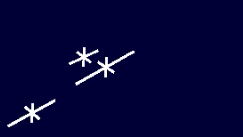How can I visualize covariance data using ROS tools?
Are there any best practices for visualizing covariance data as uncertainty ellipses/ellipsoids using ROS tools, especially rviz? There's quite a few applications where this would be desirable (most notably gaussian position estimates of parametric filters).
Of course, one could write a conversion node that gets fed for example with PoseWithCovariance messages and outputs a MarkerArray containing a polygonal representation of the ellipse/ellipsoid, but that is a bit cumbersome IMHO.
Has anybody implemented code for this scenario? Is there anything planned in the short or long term for easing development of such visualizations (I'm thinking of rviz plugins, rviz2 etc here)?





